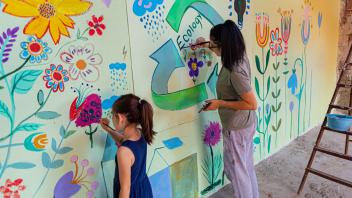I recently stumbled on a site that promises to consume far too much of my time! But I love the possibilities of Pinterest , a virtual pinboard. Pinterest lets you organize and share all the great things you find on the Web in a very visual way. It’s free to join, but there’s an invitation process you’ll see on the site.
People use pinboards to plan their weddings, decorate their homes, share their favorite recipes, and I’m using it this week to share some ideas about reading comprehension. I created this Reading Rockets Pinterest board on comprehension as a way to share some (mostly teacher made) posters for the classroom. The comprehension board also includes a bookmark and a poster that are more of a produced product, but I liked the content.
Good classrooms have good stuff on the walls. When I wrote What does a good classroom look like? back in 2008, I described what I like to see when I go into a classroom. Without question, I like to see student work and posters that reflect the hard work going on in the room. Many of the comprehension pins I’ve put on our first Reading Rockets Pinterest board reflect my penchant for interactive displays of the work of reading. Most are teacher-made, with students contributing to the content. Hopefully you’ll get an idea or two from this board, with more to come! Just click the image to see the full posting that includes the content I like.
I’ll be making other Pinterest boards for Reading Rockets in the future. I’ll probably organize them by content (front runner topics include fluency, classroom libraries, and management ideas). If you have something you’d like to share with our readers, let me know and I’ll figure out how to pin it!
About the Author
Along with her background as a professor, researcher, writer, and teacher, Joanne Meier is a mom. Join Joanne as she shares her experiences raising her own young readers, and guides parents and teachers on the best practices in reading.


